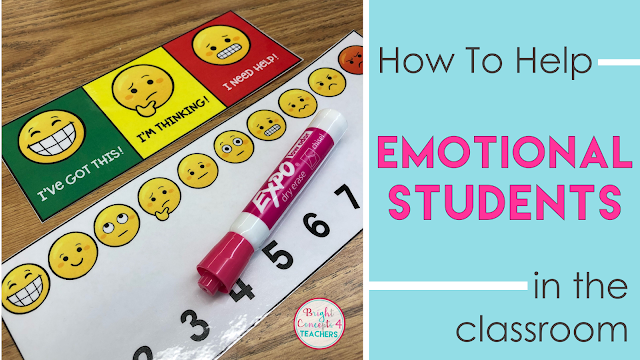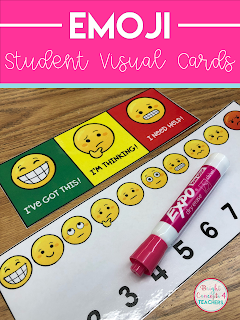It seems like any normal day in my classroom. My students walk in. They are chatting, turning in their homework, getting settled and starting to work on their morning warm up. I say good morning to each of them, as they walk in the door, and greet them with a smile.
I go to my desk to take attendance and notice Caleb isn't in his seat. He is wandering through the classroom chatting with different classmates. His things aren't put away. He goes to get a drink of water. Then he needs to use the restroom. I redirect him and get him settled in his seat.
Next thing I know, 30 minutes have passed. Most students are engaged in their morning work. Caleb, though, hasn't even started. He has 4 highlighters on his desk, a pencil sharpener, 3 pencils, 5 emoji erasers and his jacket is on backwards with the hood over his face.
And all I can think is, "Lord, help me. This is going to be a L.O.N.G day!"
I know I am not alone. We all have AT LEAST one of these students in our classes. What do your instincts tell you to do? Punish Caleb? Send him to the office? Send a scathing message to his parents? Pull your hair out (always a viable option...I'm joking!). There are a few strategies you can use the help those students get back on track and improve classroom behavior.
1. SET THE TONE FROM THE BEGINNING: BUILD TRUST
Building trust with students can be accomplished in a variety of ways. After the weekend, many students come to school with "baggage" from home and need a safe way to discuss and release their emotions. Each Monday, I have a discussion circle. It's very informal. Participation is not required. It is a way to check in with each student. They can discuss something good that happened, something that is bothering them, or nothing at all. There are students that give a thumbs up, thumbs down or neutral signal and don't talk at all. I check in with those students one on one later in the day. The most important thing is that there is NO JUDGEMENT from anyone. This helps students be honest about their feelings and trust begins to be built. This process takes about 20 minutes once a week.
2. CHECK IN ALL DAY
It is extremely important to continuously check in emotionally with your students all week (not just on Mondays). These EMOJI EMOTIONAL CUE CARDS are a key tool in my classroom to help with emotional regulation. Many students have difficulty expressing their emotions in words. These cards are kept on their desks and students can point to an emoji that describes how they are feeling that day.
Students use the numbers to determine "the weight" of the issue which is bothering them. For example, Caleb may point to the angry emoji on the top right side of the card. He is fuming! However, after speaking with Caleb, you find out someone took his favorite pencil. This problem can easily be solved with some help and would only be a 1 or 2 on the number scale.
This visual helps students see how emotionally upset they are compared to the ability to solve the issue.
3. CREATE A "SAFE SPOT" IN YOUR CLASSROOM
As teachers, it is important to create a classroom where students feel emotionally safe. All feelings are OK and will be respected. From day one in my classroom, students know they can go to the safe spot with no questions asked. I have an area in the back of my room students may use. They can rest, do deep breathing, mindfulness exercises and just take some time for themselves to reset.
4. MINDFULNESS ACTIVITIES WITH GONOODLE
GoNoodle is a great resource for teaching students mindfulness strategies. Students learn ways to manage stress, build their confidence and self control, as well as, build compassion for others. The students absolutely LOVE the activities!
5. BE VULNERABLE: SHARE YOUR FEELINGS
Teachers are the best role models for emotional regulation. Model for your students how to properly handle stress and emotions. Talk to them about how your are feeling when you are trying to teach them this incredible lesson and get interrupted 100 times with calls from the office, people walking in and out of the classroom and the same question being asked 20 different ways.
Explain what you are feeling to your students. Talk about how you handle it. Also, make sure they know you are not perfect and make mistakes. This will help them realize managing emotions is a life long learning lesson!
How do you teach emotional regulation in your classroom? I'd love to hear your ideas!
{DON'T FORGET IT! PIN IT!}






The emotional cards are a wonderful idea. I will definitely use these in my classroom next year. Thanks for sharing.
ReplyDelete